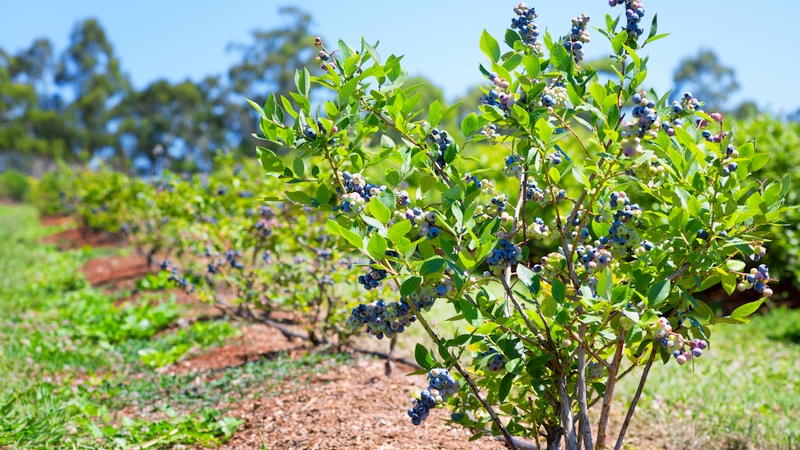What You Need To Know About Sweet Cherry Irrigation and Nutrition
Although numerous aspects of sweet cherry’s natural growth habit and its many potential orchard manipulations for optimizing high-quality fruit production have been discussed in this column over the past eight to nine years, little has been noted about managing water and nutrient delivery. However, there has been some creative research over the past 20 years that is particularly useful for cherries on vigor-limiting rootstocks and/or in high-density orchard situations.
The root systems of fruit trees on dwarfing and semi-dwarfing rootstocks, or those planted at high densities for which tree-to-tree root competition is significant, tend to mirror their canopies in terms of proportional volume. Large canopies on vigorous rootstocks or at wide tree spacings usually develop extensive root systems for acquiring water and nutrients. Trees with small canopies have very limited root systems, and most fruit tree root systems compete poorly with tractor alley grasses, weeds, and neighboring trees.
Consequently, it has become especially important to provide supplemental irrigation, as well as nutrients, in strategic and timely ways to supply the necessary growth resources to leaves for photosynthesis and shoots and fruit for optimized growth.
HERALDING HIGH FREQUENCY
An especially influential sweet cherry irrigation study was published in 2010 by Drs. Denise and Gerry Neilsen at the Pacific Agri-Food Research Centre in British Columbia, funded in part by the International Fruit Tree Association (IFTA). In a newly planted research orchard of ‘Skeena’ and ‘Cristalina’ on Gisela 6 rootstock, trees received equal amounts of supplemental water through drip irrigation, replacing that lost during the previous day through evapotranspiration.
Two irrigation regimes were compared: 1) the specified amount of water was applied every other day, and 2) the water was replaced as eight short duration applications every six hours over the same two-day period. At the time, every-other-day irrigation was considered to be high frequency compared to typical long sprinkler irrigation sets applied maybe every five to seven days; small amounts of irrigation every six hours seemed to
be outlandish.
The results, however, were astonishing. The daily high-frequency, low-duration irrigation regime resulted in significantly higher levels of K and P in leaves, higher N, P, and especially K in fruit, and a larger trunk cross-sectional area (33% to 70% larger after four years). It also appeared to slightly delay fruit ripening, as determined by various indicators of fruit maturity like color, sweetness, acidity, and firmness.
This positive impact of high-frequency, pulsed irrigation on tree establishment growth was greater than any other study effects (mulching or P fertigation). Annual P fertigation at bloom accelerated the onset of flowering and fruiting in the third growing season. These results have influenced our recommendations for all high-density orchards, particularly those on more dwarfing rootstocks and high-density orchards on coarser soils with less water-holding capacity.
Similarly, providing nutrients in small amounts periodically during spring and early summer growth is much more effective for smaller trees than a single application in early spring.
FALL FOLIAR APPLICATIONS
The other sweet cherry nutritional study that has greatly influenced management of orchards on dwarfing rootstocks was conducted by my graduate student, Theoharis Ouzounis, who studied the influence of autumn nutrient reserves on spur leaf development the next spring. Spur leaf growth occurs only during the first few weeks of spring, essentially dependent entirely on carbohydrates, nitrogen, and other nutrients stored in reserve tissues. Consequently, they are usually smaller than most shoot leaves, which develop and expand during active shoot growth as spring progresses, with nutrients supplied from soil uptake.
Ouzounis simulated premature defoliation in fall (while leaves were still green, before senescence remobilized nitrogen to storage tissues in the tree) as well as supplemental foliar applications of urea. Defoliation reduced storage levels of nitrogen by as much as 30%, while foliar urea applications increased storage N levels in spurs up to 40% and increased spur leaf size in spring up to 24%. The foliar urea applications also improved cold acclimation during fall.
Consequently, for successful sweet cherry production on vigor-limiting rootstocks and high-density orchards, we always recommend supplemental irrigation during canopy growth provided as high-frequency, short duration sets to replace the previous day’s water use (evapotranspiration). And in early September, we recommend two supplemental foliar applications of 3% urea, repeating about seven to 10 days later, to enhance spring spur leaf development and initiate the early stages of cold acclimation.










